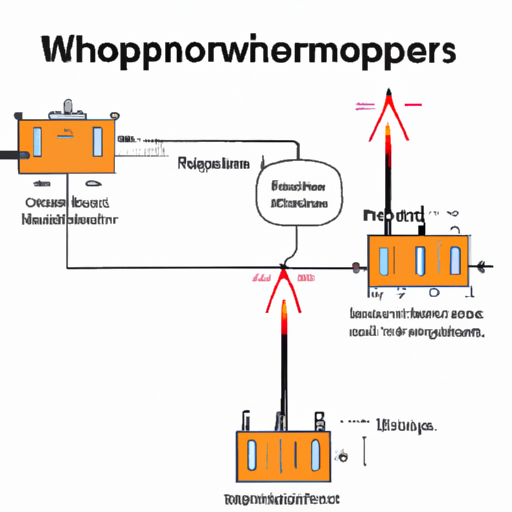

An operational amplifier, often referred to as an op-amp, is a versatile and widely used electronic component in various applications such as signal processing, amplification, filtering, and instrumentation. It is a high-gain differential amplifier with two input terminals (inverting and non-inverting) and one output terminal. The op-amp is designed to amplify the voltage difference between the two input terminals and produce an output voltage that is a multiple of this difference.

One of the key characteristics of an op-amp is its high open-loop gain, which can be as high as 100,000 or more. This means that even a small voltage difference between the input terminals can result in a large output voltage. The open-loop gain of an op-amp is typically specified in the datasheet and is an important parameter to consider when designing circuits with op-amps.
Another important characteristic of an op-amp is its input impedance, which is typically very high (in the range of megaohms). This high input impedance allows the op-amp to interface with a wide range of input sources without loading them down. The output impedance of an op-amp is typically low, which allows it to drive loads with minimal distortion.
The operation of an op-amp can be further understood by considering its ideal characteristics. In an ideal op-amp, the open-loop gain is infinite, the input impedance is infinite, the output impedance is zero, and the bandwidth is infinite. While real op-amps do not have these ideal characteristics, they come close enough for most practical applications.
The most common configuration of an op-amp is the inverting amplifier, where the input signal is applied to the inverting input terminal and the output is taken from the output terminal. The gain of the inverting amplifier is determined by the ratio of the feedback resistor to the input resistor. By choosing appropriate resistor values, the gain of the amplifier can be set to any desired value.
Another common configuration of an op-amp is the non-inverting amplifier, where the input signal is applied to the non-inverting input terminal and the output is taken from the output terminal. The gain of the non-inverting amplifier is determined by the ratio of the feedback resistor to the resistor connected to the inverting input terminal.
In addition to amplification, op-amps can be used in various other configurations such as summing amplifiers, difference amplifiers, integrators, differentiators, and active filters. These configurations allow op-amps to perform a wide range of signal processing functions in electronic circuits.
In conclusion, operational amplifiers are versatile and essential components in modern electronics. Their high gain, high input impedance, and low output impedance make them ideal for a wide range of applications. By understanding the basic operation of op-amps and their various configurations, engineers and hobbyists can design and build complex electronic circuits with ease.
An operational amplifier, often referred to as an op-amp, is a versatile and widely used electronic component in various applications such as signal processing, amplification, filtering, and instrumentation. It is a high-gain differential amplifier with two input terminals (inverting and non-inverting) and one output terminal. The op-amp is designed to amplify the voltage difference between the two input terminals and produce an output voltage that is a multiple of this difference.

One of the key characteristics of an op-amp is its high open-loop gain, which can be as high as 100,000 or more. This means that even a small voltage difference between the input terminals can result in a large output voltage. The open-loop gain of an op-amp is typically specified in the datasheet and is an important parameter to consider when designing circuits with op-amps.
Another important characteristic of an op-amp is its input impedance, which is typically very high (in the range of megaohms). This high input impedance allows the op-amp to interface with a wide range of input sources without loading them down. The output impedance of an op-amp is typically low, which allows it to drive loads with minimal distortion.
The operation of an op-amp can be further understood by considering its ideal characteristics. In an ideal op-amp, the open-loop gain is infinite, the input impedance is infinite, the output impedance is zero, and the bandwidth is infinite. While real op-amps do not have these ideal characteristics, they come close enough for most practical applications.
The most common configuration of an op-amp is the inverting amplifier, where the input signal is applied to the inverting input terminal and the output is taken from the output terminal. The gain of the inverting amplifier is determined by the ratio of the feedback resistor to the input resistor. By choosing appropriate resistor values, the gain of the amplifier can be set to any desired value.
Another common configuration of an op-amp is the non-inverting amplifier, where the input signal is applied to the non-inverting input terminal and the output is taken from the output terminal. The gain of the non-inverting amplifier is determined by the ratio of the feedback resistor to the resistor connected to the inverting input terminal.
In addition to amplification, op-amps can be used in various other configurations such as summing amplifiers, difference amplifiers, integrators, differentiators, and active filters. These configurations allow op-amps to perform a wide range of signal processing functions in electronic circuits.
In conclusion, operational amplifiers are versatile and essential components in modern electronics. Their high gain, high input impedance, and low output impedance make them ideal for a wide range of applications. By understanding the basic operation of op-amps and their various configurations, engineers and hobbyists can design and build complex electronic circuits with ease.